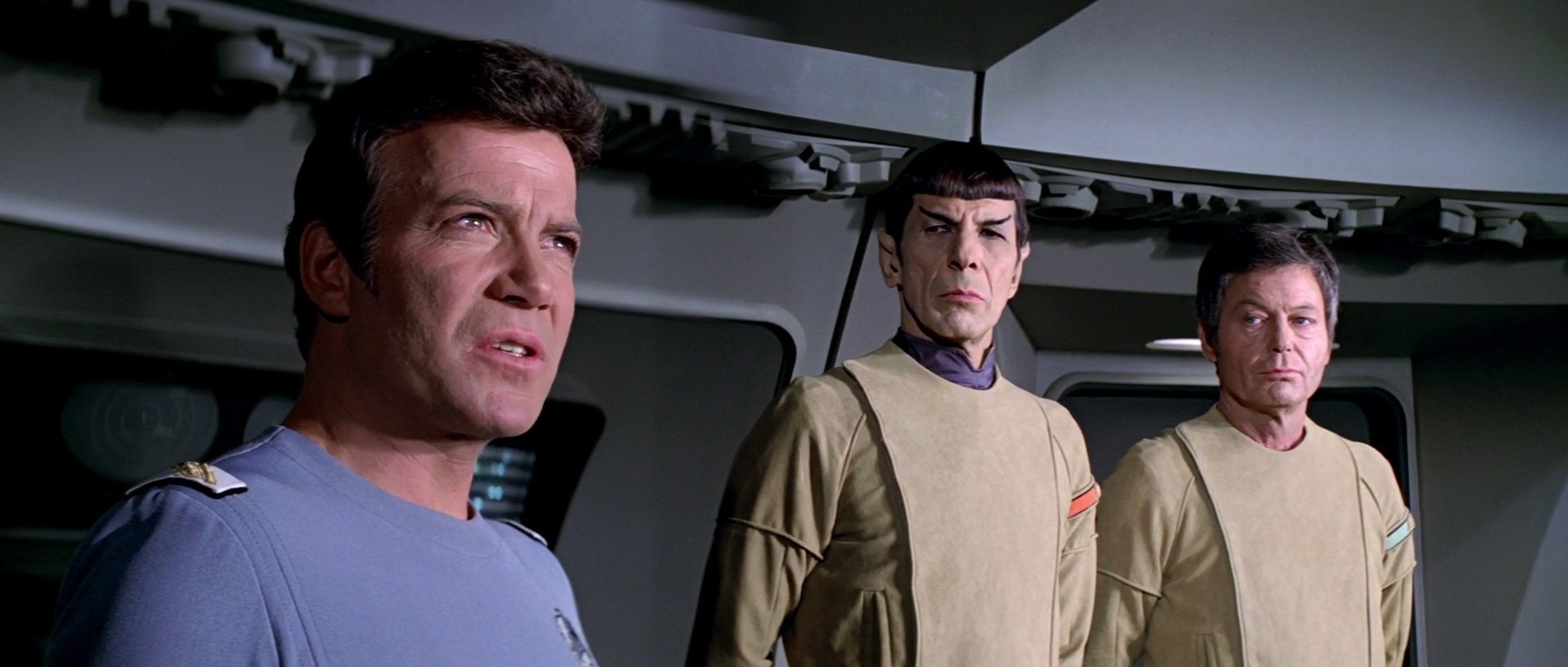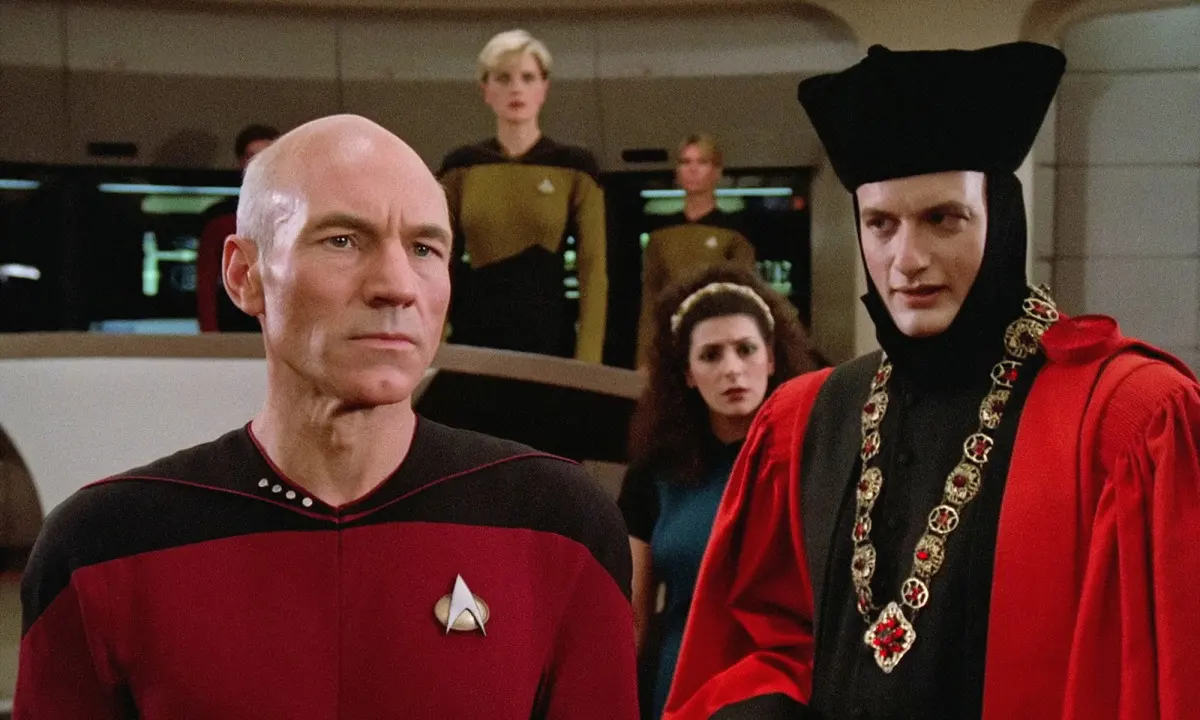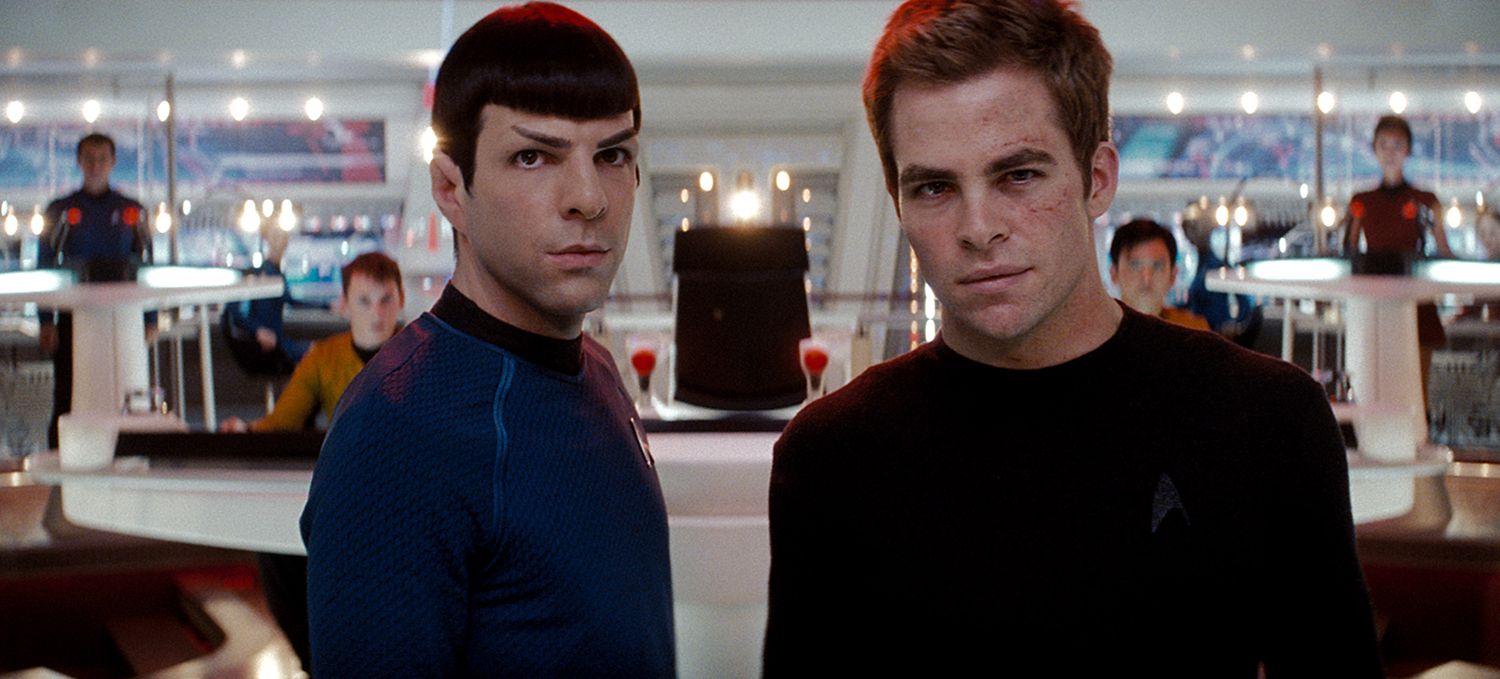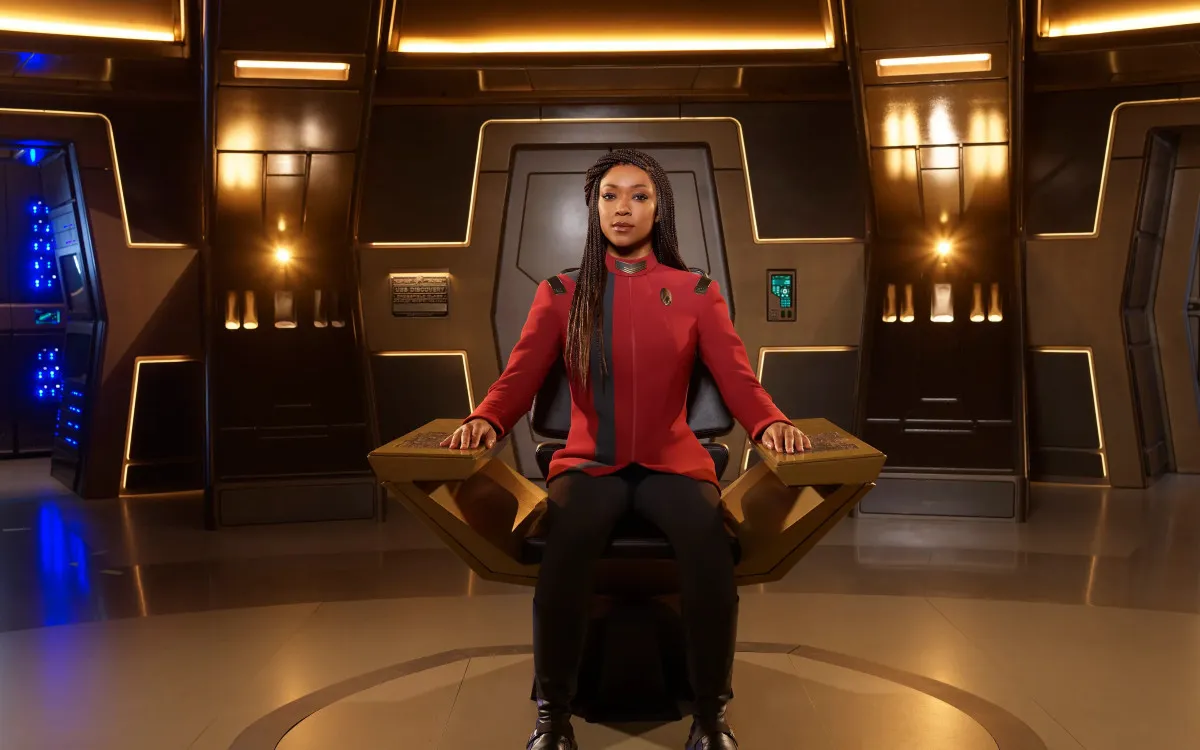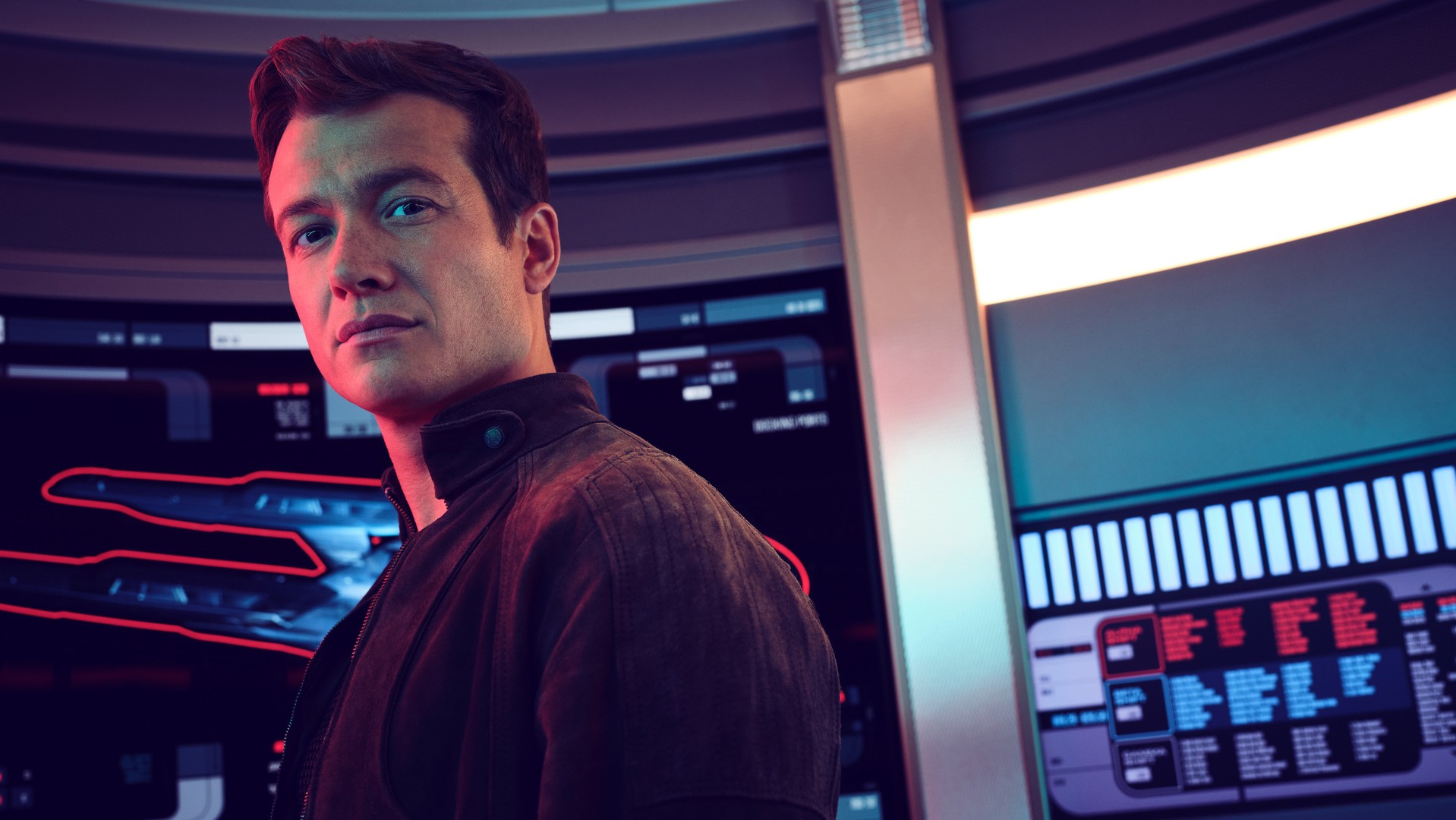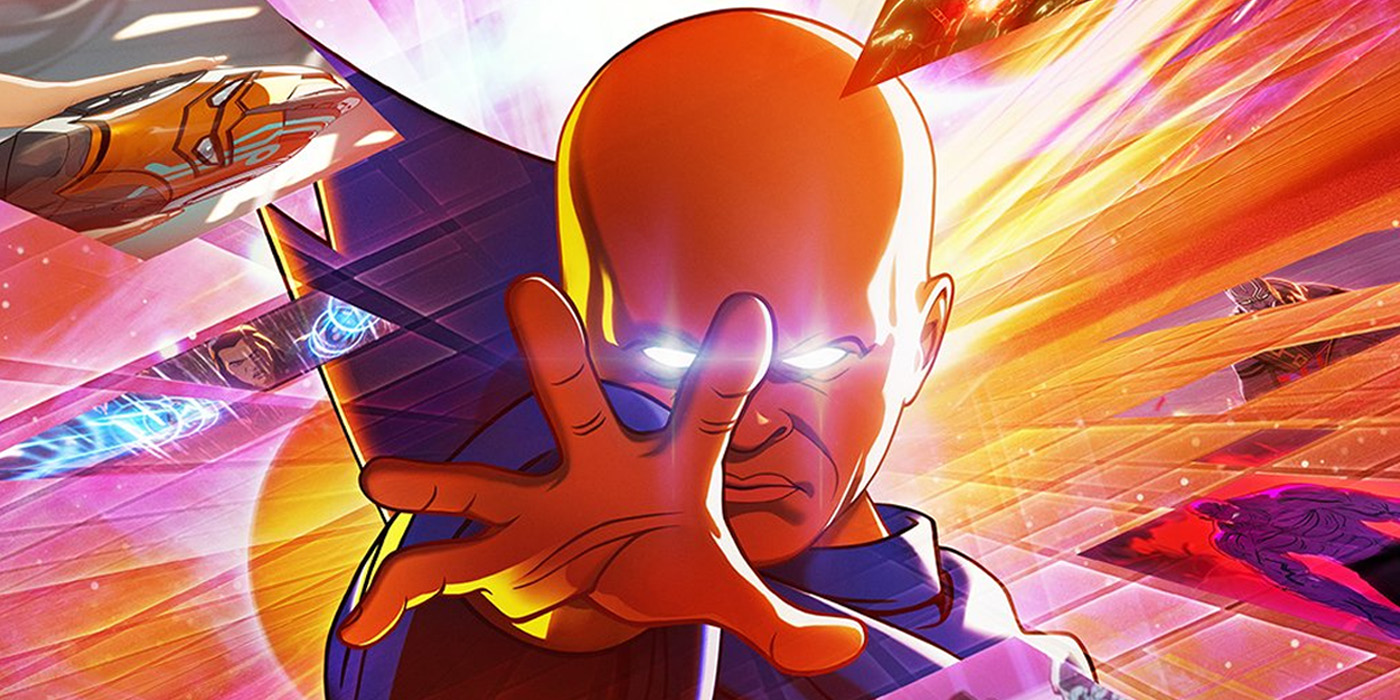‘Star Trek’ Doesn’t Need New Movies, It Needs New Shows

As of 2024, there are three Star Trek movies in various stages of discussion. The number of movies there should be? Zero. None. Make shows.
Star Trek movies! They do tend to keep happening. The original film, Star Trek: The Motion Picture dates all the way back to December 1979. And the film side of the franchise then persists across both the original series and into Star Trek: The Next Generation for a whopping ten entries. That’s not bad!
And, in fact, there’s a lot of reasons to be pro-movie when it comes to Star Trek. After all, the continued success of the movies featuring Captain Kirk and his Enterprise crew played no small part in ensuring the ’80s and ’90s “golden age” of Star Trek existed in the first place.
Similarly, the Bad Robot era Star Trek movies, which began in 2009 and ended in 2016, shepherd the TV end of the franchise from the end of Star Trek: Enterprise to the beginning of Star Trek: Discovery.
There’s more to the big-screen end of Star Trek than simply holding the door while Trek is away from TV screens. However, in the present day and in the most basic terms, Star Trek movies happening concurrently with Star Trek shows are kind of a waste of material.
Star Trek TV already looks amazing, bordering on movie quality. And resources are limited! Trek movies are coming up in conversation now at the same time that Trek shows are being canceled. Not only that, but none of the movie ideas presented thus far seem to have wowed fans. Whereas there are TV ideas fans are actively clamoring for.
With all that in mind, let’s reexamine Trek TV and movie past and consider their potential future.
Star Trek: The Motion Picture Gets Lucky
It is impossible to talk about Star Trek: The Motion Picture without talking about Phase II. And you can’t talk about Phase II without talking about the Paramount Television Service. Basically, in the late 1970s, Paramount buys the Hughes Television Network with the intention to have their own network.
The crown jewel of that network is Star Trek: Phase II—a follow-up to the original series with a mixture of returning and new characters. Six months before PTVS debuts, though, Paramount studio head Charles Bluhdorn axes the project. Not just Phase II, either: the entire network never makes it to air.
And so Star Trek: The Motion Picture is born. The script for the Phase II pilot episode “In Thy Image” gets a rework, new sets and models are built, and Leonard Nimoy returns as Spock, thus bringing the full gang back together.
Despite the criticism that TMP is “too slow” it’s a hit in theaters earning a whopping $139 million which is big money for the time. The only criticism is the buy-in. The movie, including money spent on Phase II, costs $44 million. So the edict going forward is to work cheaper—and work it does.
But there’s a simple reality here: Trek continues as a film franchise by happenstance, not on purpose. And there’s a world where PTVS exists and Phase II succeeds. That the original series cast has big screen presence is massively lucky. Had they not been, these movies might not have carried the franchise to the next massively successful era.
Speaking of which…
The Next Generation of Television and Film
Star Trek: The Original Series is iconic now. But the series didn’t find its mainstream popularity until syndication. By the time TMP hit theaters, TOS was airing 308 times a week across 134 US stations. And that doesn’t even cover the international market.
Which brings us to Star Trek: The Next Generation. TNG is wonderfully creative. But while part of its success comes from the quality of its design, its performers, and its writing, there’s another aspect that’s just as important: first-run syndication. And selling the show, market-by-market works remarkably well.
It’s the success of this kind of syndication that really allows for more franchising. Deep Space Nine also operates via syndication. And, then, with Voyager and Enterprise, Paramount finally gets their network in the form of UPN where the franchise finds a more permanent, non-syndicated home.
This time frame, the “golden age” of Star Trek, where fans develop a lifelong love for characters and where the franchise starts telling long-form stories, can only happen with television.
And there’s one other interesting thing about this time period—the film end of things is not as successful. The TNG cast does not translate as well to the big screen as their TOS counterparts. And after their first two film entries, Generations and First Contact, the third and fourth movies straight up fail. 2002’s Star Trek: Nemesis sees an end to Trek films for the next 7 years.
At this point, while TOS films are successful, the greater success both for fans and for financiers comes from television. But then…
The Kelvin Timeline
If there’s an argument in favor of Star Trek movies, it is the era that begins with 2009’s Star Trek. And the reason why is pretty simple: JJ Abrams and Bad Robot really know how to kickstart a franchise.
A big-budget, action-packed reimagining of the original Enterprise crew with a hot, new cast. The idea alone guarantees butts in seats. Everyone knows who Kirk, Spock, and Bones are. Giving new viewers a fresh origin story is an invitation for anyone who needs a jumping-on point. And at least anecdotally speaking, every angry nerd who was furious at the very notion of new actors in these iconic roles still showed up—even if it was just to hate-watch.
The result is a massively successful new film trilogy (alright maybe not quite Star Trek Beyond). It’s a huge boost for the franchise, even if these action-heavy movies do feel more Star Wars than Trek.
But that’s the thing: it’s a boost. These movies are about making money and keeping brand awareness. They are holdovers. They are a successful holdover. But they are a holdover. Because, yes, after nearly two straight decades of television, Star Trek needed a break after Enterprise. The franchise fatigue was real.
But by 2016, it was time to go back to the small screen.
Star Trek: Streaming Edition
It’s impossible to overstate this: television is very different from the ’80s and ’90s. It’s so different that new Star Trek isn’t doesn’t even use terrestrial television as its primary form of transmission. Almost everything streams through Paramount Plus. And that’s both a blessing and a curse.
On the plus side, Star Trek is such a big and bankable franchise that Paramount’s streaming service was first built around it. At first, that means multiple new shows in the franchise. We’ve seen five different shows in less than a decade. That’s incredible.
The problem is that streaming is not doing well. It’s expensive and the return isn’t what people thought it would be. And part of the problem is the glut of services mixed with a recession. People cannot afford every service. And the services cannot easily afford multiple science fiction series.
Two Star Trek shows from this era are either over or ending and one of them is on another service now. That leaves only two shows. And the showrunner of Star Trek: Lower Decks has not made it a secret that he fears cancellation.
And in the midst of all that, there’s news of only one new TV series—and three potential movies. So after all that preamble, let’s talk about Star Trek’s future.
There Can Only Be One
Star Trek TV shows and movies rarely coexist. And when they do, they often do not play well together. Two movies from the original cast came out during the TNG era, only the latter of which is really successful. And we’ve already discussed the TNG movies which also have quickly diminishing returns. The combined failure of Star Trek: Nemesis and the overall poor performance of Enterprise brought the golden age to a close.
This streaming era does not have the financial comfort that Trek at its peak enjoyed. Which means there simply isn’t enough money for movies and television. So the question becomes: which choice is best, both financially and for fans? Because these two aspects are tied with one another.
Consider the movie ideas. There’s a Section 31 series starring Michelle Yeoh, a prequel set between Enterprise and TOS, and a Picard movie. You know what these three ideas have in common—they are all things fans seem tepidly interested in at best. Their only benefit is that they will cost less than a series.
Meanwhile, the two current series Strange New Worlds and Lower Decks have strong fan support. And there’s also the fabled Star Trek: Legacy, an idea that represents the closest Trek has come to universal interest in decades.
In this case, chasing the potential of a wider fanbase through film feels like folly. We have successful shows right now and the potential for another if only Paramount would give it the green light. Better to pick two shows with built-in going forward than spend money on movies most fans have little interest in.

